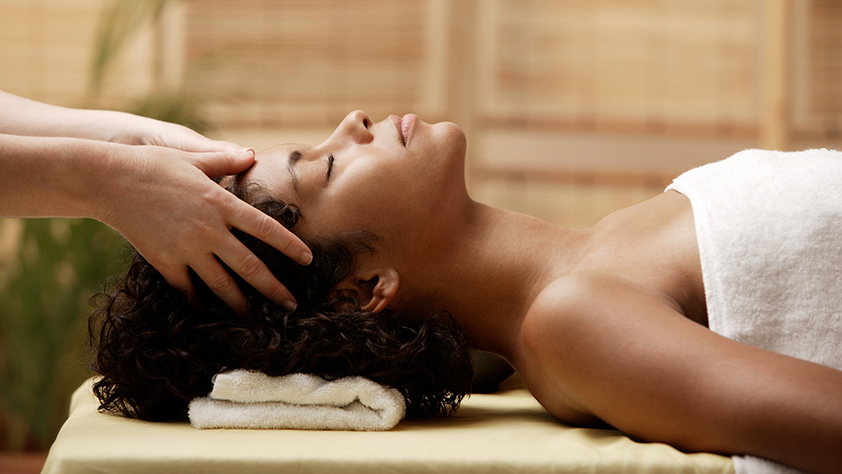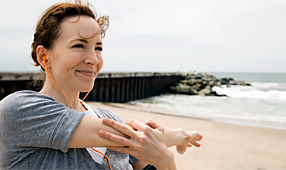Massage may feel like an unaffordable luxury, but a growing body of research suggests it’s a necessity, especially for educators. Not only are teachers on their feet all day, often hunched over a child’s desk, they’re also accustomed to nurturing everyone but themselves.
“Most educators are dealing with some kind of postural stress,” says Otto Janke, chiropractor in Cortland, New York. “We call it teacher posture because they’re always hunched over with their head a few inches (or more!) in front of their shoulders.” More often than not, that head forward position not only manifests with shoulder and neck tension, it also taxes the nervous system. The good news: Massage can help.
While garden-variety stress is most likely to prompt a visit to the massage therapist, studies show there are greater health benefits. Here, five ways a rubdown can improve your health:
1. Protect your ticker. Myriad studies have uncovered a link between massage therapy and enhanced heart health. Even a 10-minute chair massage can lower blood pressure and heart rate. A 2013 study, published in the International Journal of Preventive Medicine, for example, concluded that massage therapy helped keep blood pressure levels in check among pre-hypertensive women. The immediate results of lowered blood pressure lasted up to 72 hours after massage.
2. Soothe your mind. If you can imagine sprawling out on a massage table with soothing tunes and warm oil, it’s easy to see why massage produces such tremendous mood-boosting benefits. In fact, studies show massage lowers the stress hormone cortisol by up to 30 percent. And when cortisol levels drop, the feel-good hormone serotonin increases. In a review conducted by the Touch Research Institute (TRI) at the University of Miami School of Medicine, serotonin levels increased by 28 percent after massage therapy. So it’s no wonder studies consistently show massage helps relieve anxiety, depression and stress.
3. Boost your immunity. Massage may give the immune system a boost by increasing levels of disease-fighting white blood cells, the immune system’s front line of defense, according to TRI. The stress-reducing side effects may also translate to a lower susceptibility to infection. A bonus: “Massage moves lymph through the body which is a vital part of our immune system,” says Kathy Gruver, PhD, LMT, award-winning author, speaker and educator. So, if you’re already sick, a massage could help move the illness through your system more quickly.
4. Silence pain. While it’s tempting to pop a pill when you’re suffering from muscle soreness, backaches or head pain, research suggests massage therapy may produce greater benefits. Researchers aren’t entirely clear how massage helps reduce pain, but they do have several theories. The gate control theory, for example, suggests that massage somehow blocks pain signals sent to the brain. Other theories suggest soothing touch signals the brain to relax the body and release endorphins, the body’s natural painkillers. Whatever the mechanism of action, research confirms massage helps squash pain no matter where it originates.
5. Improved sleep. Not only can massage encourage peaceful slumber, it also helps those who can’t comfortably rest. “Most people walk out of my office after a massage ready for a nap,” says Gruver. Indeed, studies show massage increases delta waves, a type of brain wave linked with deep sleep—and that’s critical since educators have surfaced as among the most under-slept (and overstressed) workers in America. Insufficient sleep is linked to weight gain, depression, cardiovascular disease and suppressed immunity, to say nothing of its effect on your ability to stay focused in class.
Before you go, get a thumbs-up from your doctor
While massage can be therapeutic, it’s important to check with your doctor before scheduling a rub down. In some cases, physicians may caution against massage (during the first trimester of pregnancy, for example, or when undergoing cancer treatment). Plus, visiting a doctor first may save you money! If massage is deemed medically necessary, insurance may cover your visits. At the very least, your doctor may be able to ensure you can apply funds from a health spending account or flexible spending account to the cost of massage. Once you’re cleared for therapy, visit a licensed massage therapist and be sure to inform him/her if you have any health conditions.
In a pinch, opt for do-it-yourself massage
Don’t have time to visit a massage therapist? Performing self-massage using a simple foam roller, PVC pipe or even a rolling pin can offer tremendous benefits. Just lie down, contort and press your body against the roller and hear it snap, crackle and pop in all the right places. Looking for instant relief while you’re at the front of the class? Break out a tennis ball under the desk and roll your feet to relief.












